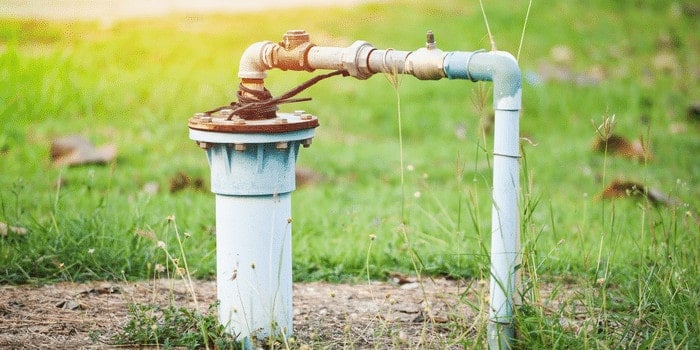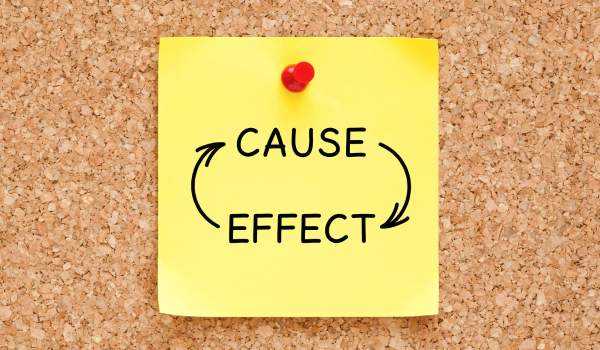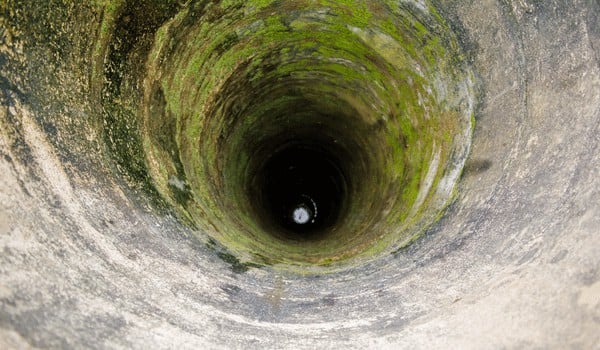Wells are more than just holes with water at the bottom — they’re engineered systems tapping into complex underground water networks. And when the water seems slow to return, it’s natural to worry.
But before you panic, take a breath. Most residential wells refill at a steady clip — around five gallons per minute — which is usually enough for everyday use. If yours isn’t bouncing back like it used to, there might be a fixable reason behind it.
🔑 Key Takeaways
- 💦 Typical recharge rate is 5 gallons per minute — more than enough for most homes.
- 🕳️ Shallow wells are more vulnerable to drought and may take longer to recover.
- ⚠️ Slow refill times could point to clogged well screens, low groundwater, or a tired pump.
- 🏠 Check with neighbors — if their wells are sluggish too, it might be a supply issue, not your system.
- 🛠️ Professional inspection can rule out equipment problems and confirm your well’s long-term health.

💧 How Much Water Should a Well Provide?
A healthy well isn’t just about how fast it refills — it’s also about how much water it can deliver when you need it.
The sweet spot for residential wells? Around 5 gallons per minute. That adds up to 600 gallons over a two-hour stretch — more than enough to handle daily household needs like showers, laundry, and lawn watering.
💡 Quick math check: The average U.S. household uses about 300 gallons of water per day, so a well pumping at 5 GPM gives you double what you need — plus a buffer for those extra-thirsty days (or filling a pool).
Not every well hits that mark, though. Age, depth, aquifer strength, and even pump condition can all affect how much water you’re really working with.
🔁 How Do Wells Refill?

Wells don’t magically top themselves off — there’s a whole underground system at work.
Most private wells draw water from aquifers, which are pockets of water stored in layers of rock and soil deep underground. As your pump draws water out, those same underground layers slowly let new water seep back in, refilling the well over time.
The recharge rate depends on what’s around your well — gravel, for instance, lets water move quickly. Clay or compacted soil? Not so much.
Once the standing water near the bottom of the well is drawn down, it might take hours or even days to fully replenish — especially after heavy use like filling a swimming pool or running irrigation.
🔗 Curious how all the parts work together? Here’s a full breakdown of how wells operate.
⏳ What Affects How Quickly a Well Bounces Back?

Wells don’t refill at the same rate — and that’s usually got more to do with what’s happening underground than anything you’re doing at home. A few natural and mechanical factors can speed things up or slow things way down.
- 💧 Soil & Rock Type Water moves more easily through loose gravel or sand. Clay-heavy or compact rock? Not so much.
- 🌍 Seismic Activity In areas with fault lines, even small tremors can disrupt underground water flow — compacting layers or rerouting recharge paths.
- 🌦 Weather Patterns Rain and snowmelt help replenish aquifers. During dry spells, recharge slows, especially in shallow wells.
- 📉 Well Depth Deeper wells pull from more stable reserves — less prone to seasonal shifts. Shallower wells refill faster but dry up quicker too. 👉 More on how depth affects well performance
- 🗺 Ground Elevation Gravity plays a role. Lower-elevation wells often refill faster because surface water naturally drains downhill.
- 🏘 Shared Aquifer Use Living near other well owners? Your refill rate may suffer if multiple households are pulling from the same source.
- 📈 Household Demand High-use days (hello, pool party) draw down water faster than your well can bounce back. Temporary slowdowns can happen even in healthy systems.
🧠 Helpful to Know: If your well’s been slower to recover lately, it doesn’t always mean it’s running dry. Seasonal changes, soil shifts, or even your neighbors installing a new irrigation system can all play a role. Keep an eye on the pattern before jumping to conclusions.
🚨 Well Refilling Too Slowly? Here’s What to Check

If your well’s taking longer than usual to bounce back after heavy use, don’t jump to worst-case scenarios. It could be something simple — or at least fixable. Let’s walk through some steps that could save you from an unnecessary deep dig (literally and financially).
🔍 Start with the Easy Stuff
- Watch the weather: Extended dry spells or sudden heat waves can temporarily lower groundwater. Pay attention to recent rainfall — slow refill rates may bounce back with the next good soaking.
- Ask your neighbors: If nearby homes on wells are experiencing the same issue, the aquifer may be running low — not just your system.
- Rule out leaks: A cracked pipe or a leaking pressure tank can mimic symptoms of a struggling well. Check your plumbing first — you might just need a simple repair.
🛠️ Maintenance Can Go a Long Way
- Swap clogged filters: A dirty whole-house filter could be choking your flow. If you’ve skipped a change or two, it’s worth checking. Here’s how to tell if your filter’s the problem.
- Check pump age and efficiency: Like any hardworking appliance, well pumps wear down over time. This guide breaks down how long pumps last and when to consider a replacement.
- Have the well inspected: A pro can check for worn-out well screens, blocked pitless adapters, or signs of poor construction — all of which can affect delivery even if the aquifer’s fine. If needed, these well filtration systems can help you future-proof your setup.
💡 Smart Tip:
If your pressure seems fine one minute and gone the next, your well pump might be short-cycling or struggling with sediment buildup. That doesn’t always mean a dry well — just a tired system that needs some attention.fill time. But it’s fooled many homeowners into thinking their wells were dry.
🔎 How to Know if Your Well’s Running Dry

Wells don’t usually quit without warning. If yours is on the brink, you’ll likely see the signs — and the sooner you catch them, the better your chances of avoiding costly repairs.
Here’s what to look for:
- 🌫️ Murky or discolored water: If what’s coming out of your tap looks more like iced tea than clean water, your pump might be pulling from the bottom of the well. This deeper layer tends to be heavy in sediment and minerals. Brown well water like this is often a red flag.
- 🧂 Odd tastes or smells: Water that suddenly tastes metallic, salty, or bitter might be pulling up minerals that normally settle near the bottom of the aquifer. Here’s a breakdown of what minerals show up in water — and how they can affect both taste and plumbing.
- 🚿 Weak water pressure: If your once-strong shower now feels like a light drizzle, your system may be struggling to keep up with demand due to falling water levels.
- 📈 Unexpected spike in electric bills: Your well pump might be working overtime — cycling more frequently in an effort to maintain pressure — which can quietly jack up your utility costs.
💡 Pro Tip: These symptoms don’t always mean your well is permanently dry. Sometimes it’s just a clogged screen, a tired pump, or even seasonal weather shifts. Catching the signs early — and knowing the difference — can save you thousands in repairs or even drilling a new well. If in doubt, call a pro and get your system checked out.
❓Frequently Asked Questions

⏱️ How long does it take for a well to refill after filling a pool?
Most residential wells recover pretty quickly — even after topping off a mid-size pool. If your well produces 5 gallons per minute, it may only take a few hours to bounce back. Just avoid running everything in the house at once during refilling.
🌡️ Are deeper wells less likely to run dry?
Yep. Deeper wells usually tap into more stable aquifers that aren’t as affected by seasonal droughts. Shallow wells are more prone to drying out, especially during hot or dry months.
🌧️ How long does it take a well to recover after a drought?
That depends on how deep your well is and how bad the drought was. Some bounce back after a few storms — others might take weeks or longer. If you’re still dry after steady rain, it’s worth having your system checked.
🛠️ What if my well stops producing water completely?
Don’t panic — it might not be permanent. A contractor may be able to lower your pump or clear out sediment buildup. Worst case, you might need to drill deeper. Learn how long pumps typically last.
🚿 Can I help my well recover faster?
Absolutely. Spacing out water use — and avoiding high-demand activities like pressure washing or lawn irrigation — gives your well more time to recharge between cycles.
 159 people found this helpful. Was this guide helpful to you?
159 people found this helpful. Was this guide helpful to you? 

